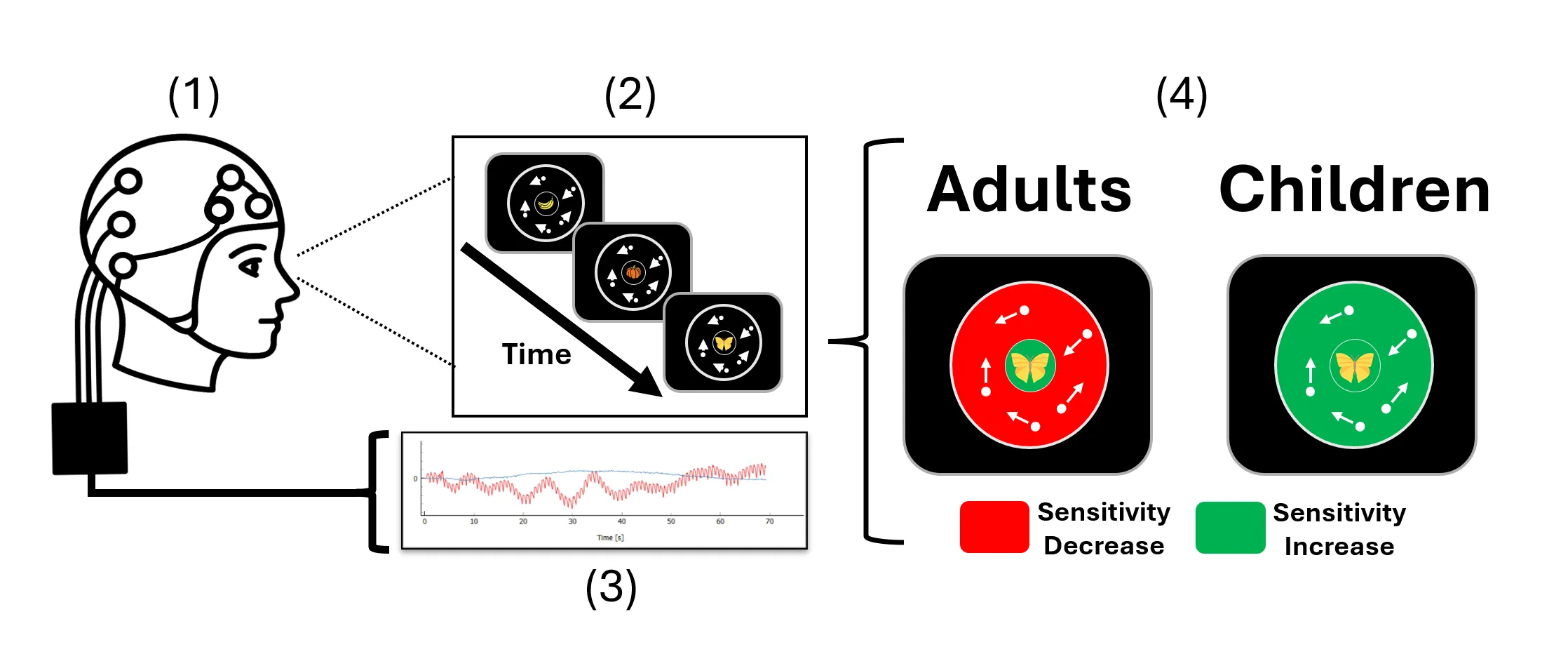Neural mechanisms of visual perceptual learning in children and adults
Dominik Aschenbrenner — Hector RCD Awardee Sebastian Frank
Visual perceptual learning (VPL) – a type of visual skill learning – has often been studied in adults as a model system to identify neural mechanisms of learning. However, it is unclear whether children employ similar neural mechanisms for VPL as adults. In this project, we will use non-invasive brain imaging to measure and compare neural mechanisms of VPL in children and adults and examine whether and if so how learning changes from childhood to adulthood.
Visual perceptual learning (VPL) – a type of visual skill learning – can occur with mere repeated exposure to a visual feature (for example, a visual orientation or a visual motion direction) even if this feature is irrelevant to the performance of a given task. In young adults, the occurrence of VPL for a task-irrelevant visual feature is facilitated if the feature is exposed near detection threshold. However, it is unclear whether this VPL occurs in a similar fashion in children and which neural mechanisms are employed in children compared to adults. In this project, we want to investigate whether neural mechanisms involved in VPL change from childhood to adulthood using psychophysics and non-invasive measurements of brain activity. We are particularly interested in whether neural mechanisms of VPL differ between children with and without learning difficulties and talented children. Using this knowledge, it might be possible to develop training procedures that can facilitate learning in children with learning difficulties based on neural mechanisms identified in talented children.
Processing of visual Task (2) and simultaneous recording of brain activity (3) using an fNIRS head-cover (1). Differences in behavioral learning mechanisms between children and adults (4).

Dominik Aschenbrenner
University of RegensburgSupervised by

Sebastian Frank
Psychology & Neuroscience

